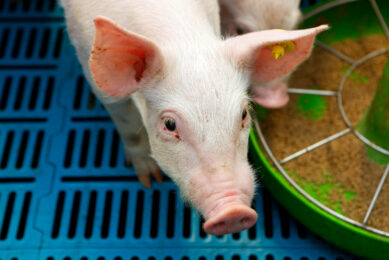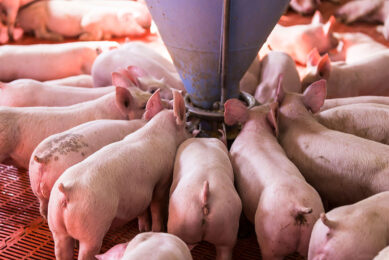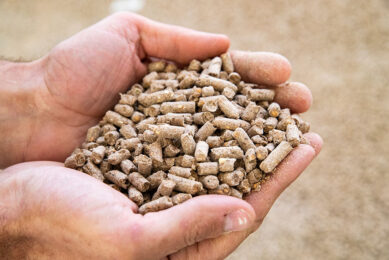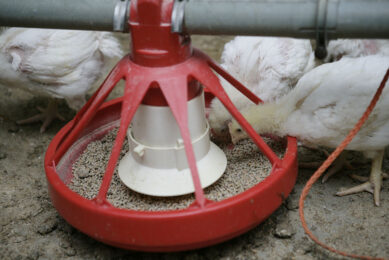The efficacy of organic acids in broilers with a high stocking density
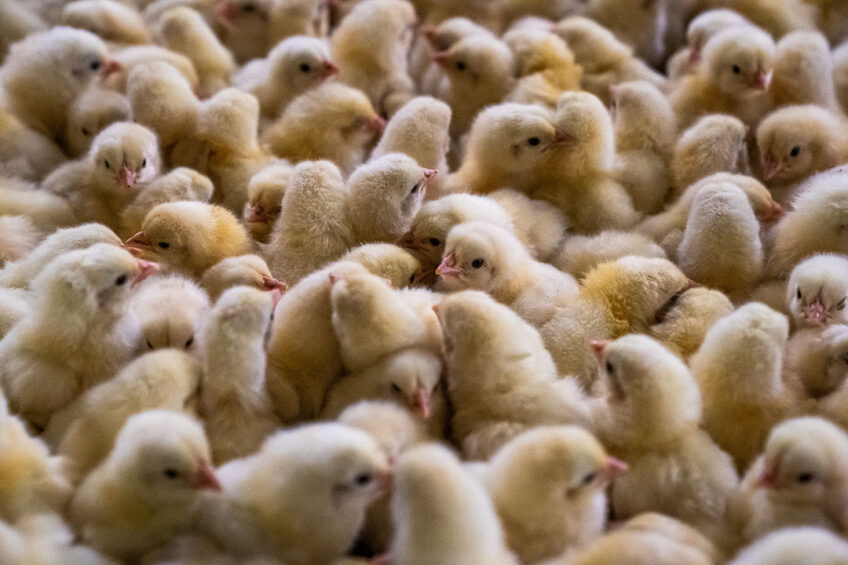
A high stocking density was found to have negative effects on the performance and health of broilers. A study published in the journal Animals elaborates on the efficacy of organic acids in broilers under a high stocking density.
With the increasing demand for poultry products, reports show that farmers pursue high yields and profitability by elevating the stocking densities in poultry production. However, high stocking density leads to various negative effects on broilers including poor growth performance, stress that increases susceptibility to diseases, and poor animal welfare. Previous studies suggest that the properties of organic acids potentiate them as additives to reduce the negative effects of stress such as high stocking density in broilers.
Study setup
This study evaluated the impact of organic acids (OAs) supplementation in drinking water on the performance, chyme pH, nutrient utilisation, and microbiota of broilers under a high stocking density (HSD). The OAs used in the current experiment were a mixture of formic acid (32%), acetic acid (7%), ammonium formate (20%), mono- and diglyceride of unsaturated fatty acids, and copper acetate. Initially, a total of 408 1-day-old broilers were randomly divided into 2 groups during the starter phase:
- Control group (CON): broilers drank normal water without any OAs;
- Organic acid group (OA): broilers drank the normal water supplemented with OAs.
In the grower phase (days 22-42), each group in the starter phase was randomly divided into 2 stocking densities (Normal stocking density = NSD, and high stocking density = HSD) and 2 levels of OAs (0 and 0.16%), resulting in the combinations as follows:
- CON+NSD: normal water + normal stocking density;
- CON+HSD: normal water + high stocking density;
- OA+NSD: OA-supplemented water + normal stocking density;
- OA+HSD: OA-supplemented water + high stocking density.
Growth performance
In the starter phase, supplementation with organic acids led to a 2% improvement in daily weight gain (ADG) and FCR, with no significant alteration in daily feed intake (ADFI). In the grower phase, the high-density condition caused poor performance by decreasing weight gain and feed intake, while increasing the FCR value.
When comparing the group of birds receiving normal water with a high stocking density and the OA group with a high stocking density, it was observed that organic acids alleviate the negative effects of high stocking by improving the growth of birds by 4.4% and FCR by 4%.
In a similar study, the inclusion of 0.1% OAs (formic acid, acetic acid, and ammonium formate) in drinking water elevated the growth performance of broilers. Other studies have also shown that supplemental OAs in water can improve the growth performance in broilers challenged with coccidium and Salmonella Pullorum, suggesting a role for organic acids in improving the immune status of broilers.
Chyme pH values
The results of the study showed that OA supplementation significantly reduced the chyme pH value in the gizzard and duodenum of the broilers in the starter phase. In the grower phase, OA supplementation decreased the chyme pH value in the gizzard, proventriculus and duodenum. It was highlighted that although supplemental OAs in drinking water reduce the chyme pH values in the upper digestive tract, this might not be representative of the whole GIT since other studies show that the upper segments of the GIT can metabolise and rapidly absorb the OAs.
Enzyme activities in duodenum
In the starter phase, the activities of chymotrypsin and α-amylase were significantly elevated in the OA group compared to the control group; the trypsin and lipase activities were not affected in the broilers. In the grower phase, the supplementation of OAs significantly increased the lipase and α-amylase activities in the duodenal chyme.
The researchers highlighted the fact that, since young broilers have a limited ability to produce enough acid to maintain the optimal pH values in the GIT needed to activate enzymes, ensure nutrition digestion, and maintain the balance of the gut microbiota in the intestine, supplemental OAs can activate the enzyme precursors in the acid environment. Thus, the activities of chymotrypsin and α-amylase were elevated in the broilers during the starter phase in the current study.
At the grower phase, supplemental OAs increased the activities of lipase and α-amylase in the duodenal chyme, which was related to the decrease in the chyme’s pH value in the duodenum in this study.
Nutrient digestibility and VFA contents
As shown in Table 1, the HSD condition had a negative influence on nutrient digestibility in the grower broilers. The supplementation of OAs resulted in the elevation of nutrient digestibility which could lead to improvements in nutrient utilisation as seen by the higher growth rates of grower broilers in the current study. OAs can release protons and reduce the pH in GIT, which improves the digestive enzymes’ activities to elevate nutrient digestibility. In addition, lower pH values can also reduce pathogenic bacteria, ultimately leading to improvements in nutrient digestibility.
On the other hand, short-chain fatty acids or VFAs can regulate the microbial population in the GIT, elevating the immune system and promoting resistance to inflammation. For example, butyric acid can regulate the gut barrier and play anti-inflammatory and immunoregulatory roles in maintaining gut homeostasis. Current results (Table 1) show that supplemental OAs in drinking water elevate acetic acid, butyric acid, isovaleric acid and valeric acid concentrations of the caecal chyme in broilers during the grower phase.
Microbial community in the caecal chyme
The gut microflora plays a vital role in the health of animals by regulating nutrient utilisation, intestinal integrity, and immune functions. Neither the supplementation of OAs nor the stocking density affected the alpha diversity of the caecal microbiota of broilers. However, at the genus level, the butyrate-producing bacteria, Alistipes’ relative abundance was significantly decreased in the HSD group, which indicated high stocking densities might compromise gut health. On a positive note, the OA supplementation increased the relative abundance of the Christensenellaceae R-7 group and UCG-005. Correlation analysis reflected that the activities of α-amylase and lipase are positively associated with the Christensenellaceae R-7 group, while FCR is negatively associated with UCG-005.
Conclusion
High stocking density leads to negative effects in terms of growth performance and nutrient digestibility and decreases the caecal beneficial bacteria in the broilers. To counter the effects of a high stocking density, supplementing organic acids through drinking water promotes growth performance, which is supported by reductions in the chyme pH in the upper digestive tract, increased enzyme activities in the duodenal and increased nutrient digestibility.
This article is based on an original publication by Miaomiao Han, Bingbo Chen, Yuanyang Dong, Zhiqiang Miao, Yuan Su, Ci L iu and Jianhui Li. 2023. Evaluation of Liquid Organic Acids on the Performance, Chyme pH, Nutrient Utilization, and Gut Microbiota in Broilers under High Stocking Density. Animal, 13: 25 7.




